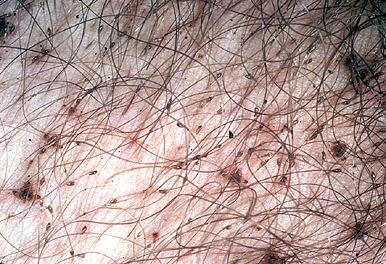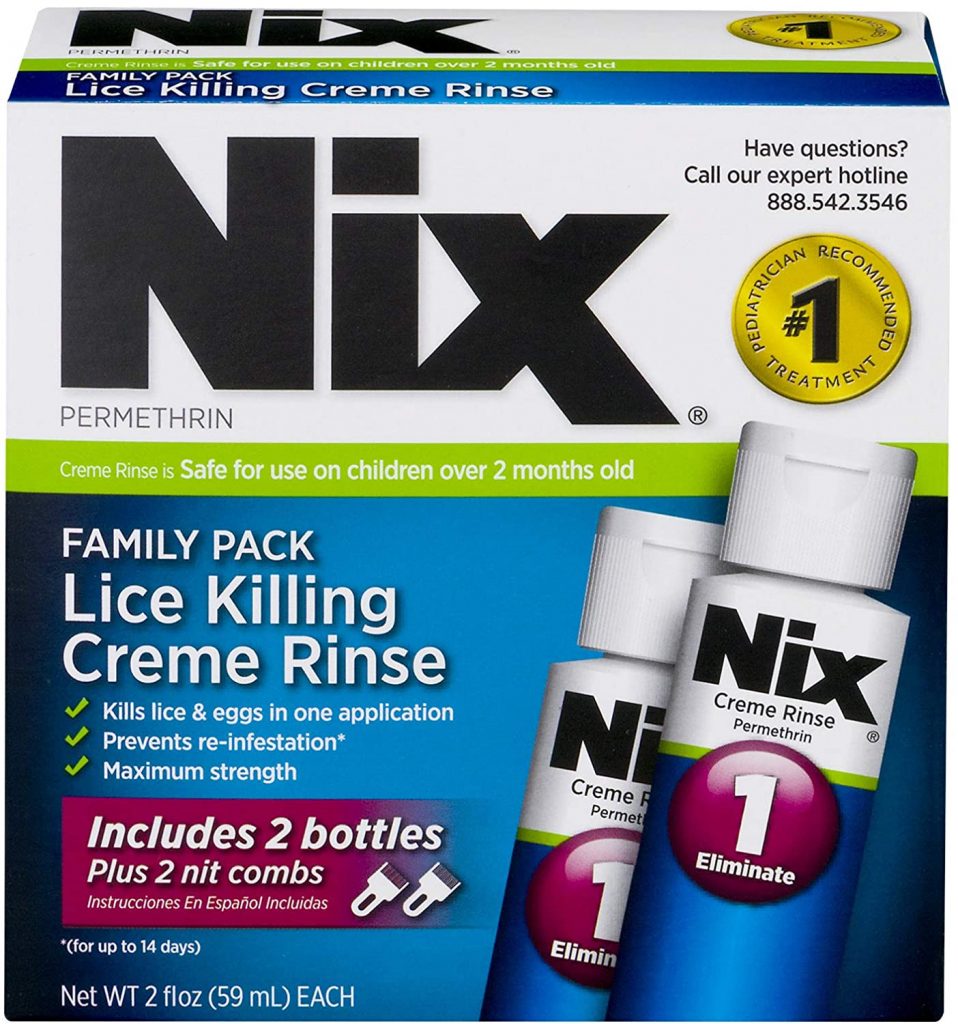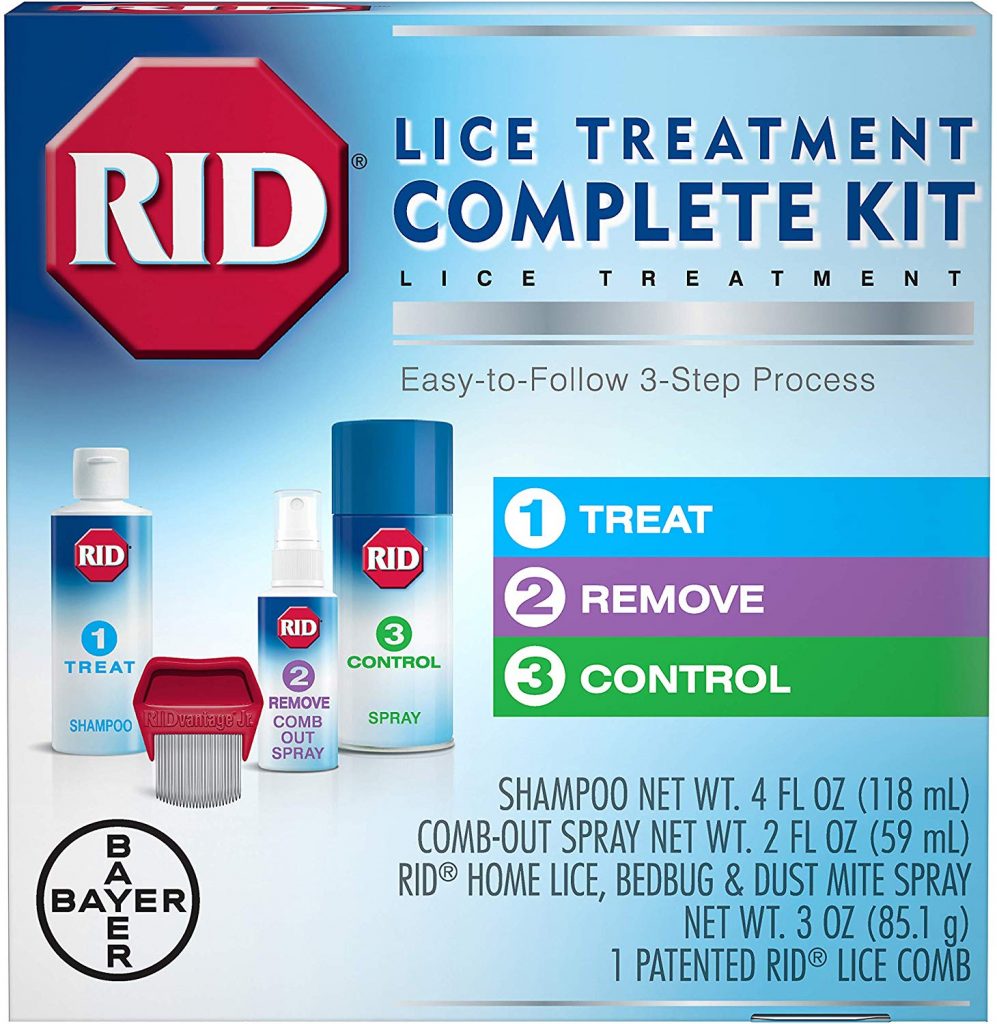Pediculosis
(Lice Infestation)
Overview
What are lice? — Lice are tiny insects that can live on people’s skin and in their hair, and cause itching. Three types of lice can live on or close to people’s bodies:
●Head lice can live on your scalp and in the hair on your head
●Body lice can live in the clothes you wear, and feed on your body (these are uncommon)
●Pubic lice, also called “crabs,” can live in your pubic hair, eyebrows, eyelashes, armpits, beard or mustache, or other areas (picture 1)
Lice do not fly or jump. They are spread by person-to-person contact or by sharing clothes and personal items. For example, you can get head lice from head-to-head contact with someone with has it. You might also be able to get head lice from sharing items like hats or combs, but this probably doesn’t happen as often. You can get pubic lice by having sex with someone who has it.
Lice can lay eggs, also called “nits,” which then hatch into new lice. People can find lice and nits on their body or in their hair.
How can I tell if I have lice? — Most people have itching on the part of the body where the lice are. With pubic lice, people can also have pale blue spots on the lower belly or upper thighs, or itching and redness of the eyes or eyelids.
But some people might not have any symptoms at all. They might find out they have lice only by seeing small white nits or live lice in their hair. Sometimes it is easier to see nits, because lice can move quickly and hide from view.
Is there anything I can do on my own to get rid of lice? — Yes. To get rid of head and pubic lice, you can:
●Use a special fine-toothed comb to carefully comb out nits and lice from your hair
●Use a non-prescription cream or lotion on your hair or body that kills lice. Be sure to follow all of the directions on the label.
You might hear or read about other treatments for lice that involve products like olive oil or mayonnaise. Most doctors do not recommend these “natural” treatments.
You will also need to get rid of and kill the lice on items in your home so you don’t get lice again. To do this, you can:
●Wash clothes, bedding, and towels in hot water and dry them on the hottest setting
●Vacuum your carpets and furniture
●Put things you cannot wash into a sealed plastic bag for 2 weeks
If you or your child has lice:
●All of the adults and children in the home should be checked for lice
●Talk with the school nurse
If you have pubic lice, you need to:
●Tell anyone you had sex with in the past month, so they can be treated, too
●Be tested for other diseases you can catch when you have sex. The person who gave you pubic lice might have given you another disease, too.
Should I see a doctor or nurse? — Yes. If you can’t get rid of your lice by doing the things described above, see your doctor or nurse. They might prescribe a stronger lotion or a pill for you to take.
What can I do to prevent getting lice? — You can reduce your chances of getting lice by:
●Not sharing a bed, clothes, or personal items with someone who has lice
●Not having sex with someone who has pubic lice
picture 1: Pubic lice

Numerous lice and nits located around the pubic hair.
Permethrin is an anti-parasite medication.
Topical treatment of pediculosis capitis (head lice infestation) in adults and children ≥2 months of age
In the treatment of pediculosis capitis (head lice infestation), a fine-toothed comb often is recommended to remove any remaining nits (eggs) or nit shells. Some experts do not consider nit removal necessary since only live lice can be transmitted, but recommend it for aesthetic reasons and to decrease diagnostic confusion and unnecessary retreatment. Others strongly recommend removal of nits (especially those within 1 cm of the scalp) since no pediculicide is 100% ovicidal and potentially viable nits may remain on the hair after pediculicide treatment. Although many schools will not allow children with nits to attend, AAP and other experts consider these no-nit policies excessive.
For treatment of pediculosis capitis (head lice infestation), wash the hair with regular shampoo, rinse with water, and towel dry before applying permethrin cream rinse.Ref Shampoos that contain a conditioner or a separate post-shampoo conditioner should not be used since they may decrease the drug’s pediculocidal effect.Ref After the recommended period (usually no longer than 10 minutes), rinse with water.Ref
During application, protect children’s eyes with a washcloth, towel, or other suitable method.Ref
Following proper pediculicide application, lice die quickly; therefore, living lice detected during scalp inspection ≥24 hours after treatment probably indicates a very heavy infestation, reinfestation, or resistant infection.Ref After ruling out improper application in such patients, AAP recommends immediate retreatment with a different pediculicide followed 7–10 days later by a second application.Ref
Other family members and close contacts of the individual with pediculosis capitis should be evaluated by a clinician and treated if lice infestation is present.Ref Some clinicians suggest that it is prudent to treat family members who share a bed with the infested individual, even if no live lice are found on this family member.Ref
Since pediculosis pubis (pubic lice infestation) usually is transmitted by sexual contact,Ref presumptive concurrent treatment of sexual contacts to whom lice might have been spread within the last month is recommended.Ref Presumptive concurrent treatment also has been recommended for other close contacts of the patient.Ref
Patients with pediculosis pubis should avoid sexual contact with their sexual partner(s) until patients and partners have been treated and reevaluated to rule out persistent disease.
Pediculus humanus infestations: Treatment of Pediculus humanus infestations (head lice, body lice, pubic lice, and their eggs)
For external use only. Avoid touching eyes, mouth, or other mucous membranes. Apply enough solution to completely wet infested area, including hair (product is applied to DRY hair). For head lice, first apply behind ears and to back of neck. Allow to remain on area for 10 minutes; do not leave on longer than 10 minutes. Wash area thoroughly with warm water and soap or shampoo, and then thoroughly rinse. For head lice, use fine-toothed comb or the special lice/nit comb to remove lice and eggs from hair. Remove any remaining nits by hand (using a disposable glove). Keep out of eyes when rinsing hair; protect eyes with a wash cloth or towel.



